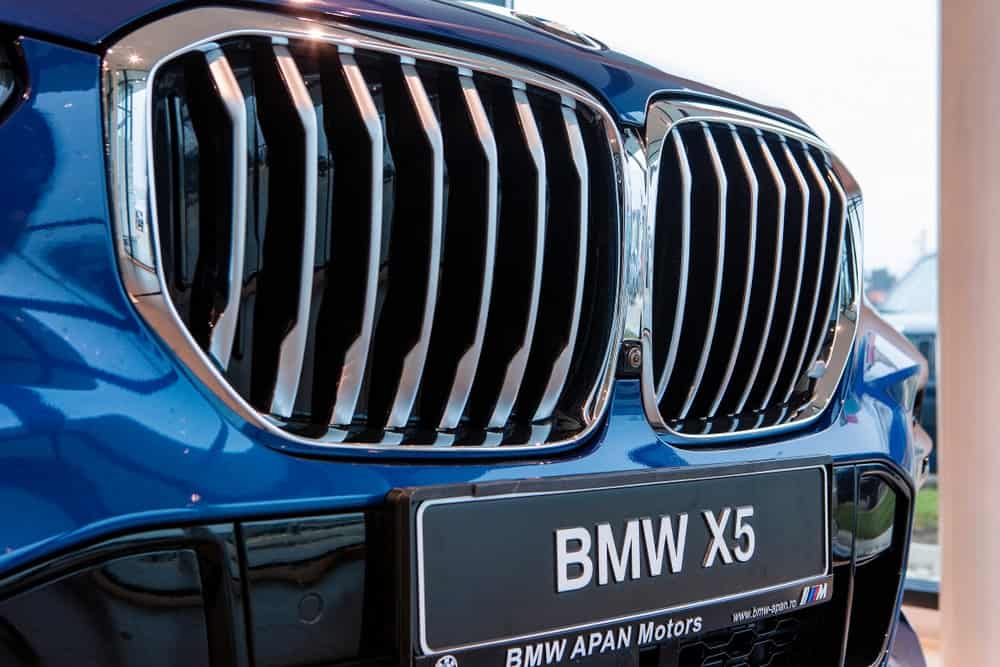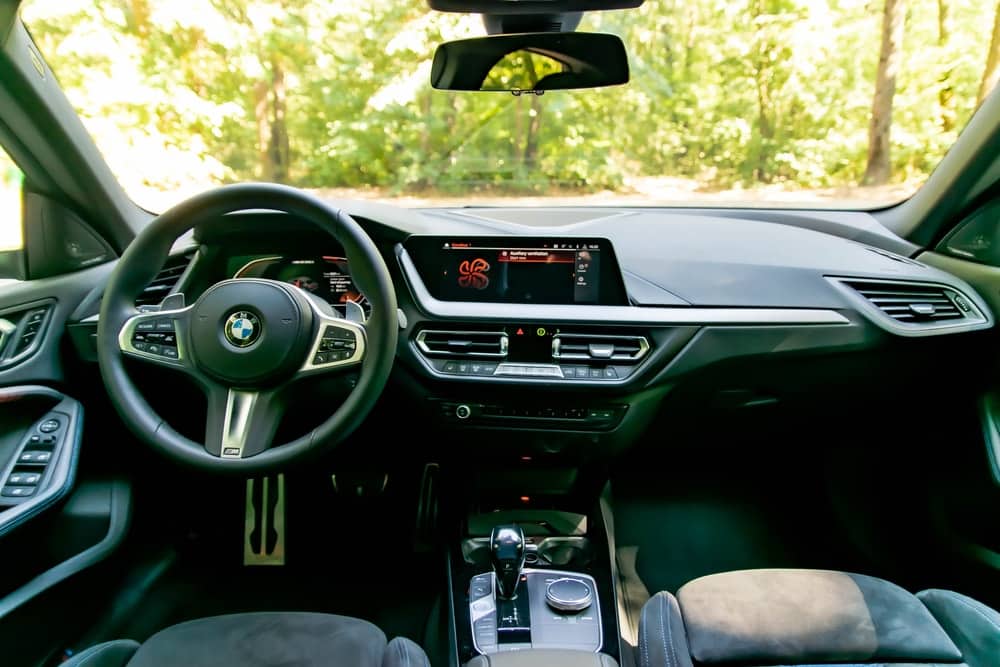It’s no secret that drivers are usually forced to maneuver through suboptimal conditions. From slick roads and winter storms to potholes, uneven terrain, and summer showers, all conspiring to make your drives an uphill battle.
Fortunately, BMW has unveiled a barrage of technologies in recent years. And, one that stands out from the rest is the BMW xDrive. It’s an all-wheel-drive (AWD) system that goes the extra mile compared to other counterparts that have been implemented in previous models.
In turn, it’s a beast at helping you conquer the road irrespective of the conditions. But what is it, and how does it work? Read on to discover the in-depth answers to these questions.
What Is BMW xDrive?
For starters, xDrive is categorized as all-wheel-drive. In the standard system during casual driving, 40% of the power is channeled to the front wheels, whereas the remaining 60% is targeted to the rear wheels.
Then, upon the sensors detecting a wheel slip, power is redirected to the individual wheels, backward, or forwards for the optimum car stability and grip maximization.
As a result, the xDrive BMWs have a better grip on the road courtesy of the reduced possibility for unwanted loss of traction in the corners in low-grip surroundings such as off-road, and when making sudden maneuvers.
How Does BMW xDrive Work?
There are currently two xDrive variants. Firstly, the on-demand system that drives the rear and front wheels as needed and is found in the latest X1 models. Secondly, there’s the original or ‘real’ xDrive that functions differently and ideally for all BMW all-wheel-drive (AWD) vehicles, which we’ll focus on in this guide.
It begins with a 40:60 torque division from front to rear, which is a plus. Most AWD systems barely power the front wheels, thus leaving the rears trailing and only driving them when the computer system detects a traction loss.
These systems don’t match up to the likes of the xDrive because if all wheels are driving, the chances of slipping are slim. And, for driving enthusiasts, there’s sharper handling of a rear-drive biased car due to increased traction of the front wheels for enhanced steering.
Furthermore, the 40:60 split indicates the middle clutch that handles torque distribution from front to rear is constantly functioning. Other systems that at times steer the back wheels are armed with center clutches that are built to operate for small timeframes. So, they overheat with slight usage, which leaves you stuck in two-wheel-drive (2WD). It’s this frustrating design flaw that xDrive vehicles don’t encounter.
Nonetheless, the 40:60 split is not constant, which means the computer systems can send 100% of the torque in pounds to the rear or front axles through an electrically-operated middle clutch. Upon picturing a hill-start with the two back wheels on ice and fronts on the tarmac, you’ll understand why it’s essential.
But BMW xDrive is smart enough to evenly spread out torque without wheel-spin, for instance, when maneuvering corners. Assume the car is beginning to under-steer, which indicates running wide as a result of less grip at the front and increased grip at the back.
A viable solution to this problem is to request the front tires to conduct less driving and leave more grip for turning. XDrive simply gets the job done by biasing the torque to the back. The same applies to over-steer whereby the front has increased grip compared to the rear, thus biasing the torque to the front. In turn, it ushers in a better grip for the improved turning of the back tires.
Are you scratching your head, puzzled as to how the xDrive knows to do this? Well, as seen with modern vehicles, sensors are located everywhere. Steering wheel angle, pitch and roll, wheel speed, and brake, and throttle position.
Collectively, these form a data torrent that the computer systems use to monitor what the vehicle is doing and should be doing. Then, based on this, it comes with a development on the next move.
For instance, if you hit the brakes after hammering into a corner, the vehicle can work out the type of traction the surface provides. It’s based on the rate at which the car decelerates according to the amount of braking force against factors such as wheel slipping. You can then decide to turn into the corner.
The vehicle is now aware of how tight you want to turn, the turning speed, and the surface’s traction. So, it can then decide the level of ease at which you can make the turn, rating it on a scale of ‘panic stations’ to ‘no worries.’
If the turn is on the panic end of the spectrum, then the computer system will bring other programs on board, such as Corner Brake Control (CBC), which puts individual wheels on the brake to aid in the better turning of the car before it starts slipping and sliding.
Now, we’ve entered the realm of proactive driving technology that is as clear-cut from waiting until an issue crops up then doing damage control. Another example of proactive driving systems is the suspension. BMW xDrive can alter the stiffness of the dampers in a jiffy.
For instance, with intense braking, it’ll stiffen, and when taking a sharp right corner, it’ll stiffen the left, and vice versa. Moreover, Torque Vectoring comes into play, which is something that BMW has incorporated in all X6 models. And, the company is branching out across the X models. Normal vehicles have a differential for even torque distribution left and right, when the inside wheel decelerates, and when the outside wheel accelerates by the ideal speed to maintain the pace. Torque Vectoring is a relative slew steer. It’s when wheel cornering is intentionally driven slightly faster than usual to help make the turn.
For instance, when outside wheel cornering is overdriven to aid in the turn, but the vehicle is ‘over-steering,’ the inside wheel would be driven faster. All this is conducted via a clutch park with the computer systems coordinating with the sensors on the next move to make and when.
So, all this is theoretically. Practically, it implies that the BMW is constantly utilizing the traction available and following the path you steer it. Everything functions automatically, which eliminates the need to learn additional skills. All you have to do is point and drive.
What’s the Downside to BMW xDrive?
It’s no secret that BMWs armed with xDrive have an additional pair of driven wheels, which makes the life of any driver a breeze when they’re on the road. But, for every upside, there’s always a downside.
So, for starters, the servicing costs will attract higher premiums compared to maintaining regular rear-wheel-drive (RWD) models as a result of extra inspection and servicing requirements.
Secondly, all-wheel-drive (AWD) lowers efficiency. As BMW xDrive channels power to all four wheels permanently and increases the torque, it’s a no-brainer that it’ll inevitably usher in more fuel consumption compared to rear-wheel-drive models. A BMW 320d that uses RWD can accomplish a supposed 56.6 mpg. But if the same car uses xDrive, then the figure drops to 49.6 mpg.
Which Models Come With BMW xDrive?
We’ve rounded up a few vehicles in the lineup of BMWs that are equipped with xDrive.
- 2 Series
- 7 Series
- X3
- 3 Series
- 8 Series
- X5
- X7
- X1
- 4 Series
- X6
- 5 Series
- X4
- 6 Series
What Features Make the BMW xDrive Safe?
Here’s a summary of the xDrive safety features that will put your mind at ease when you’re on the road.
Dynamic Performance Control
The xDrive delivers unique cornering ability. The split torque between the right and left rear wheels elevates traction and handling, which ushers in precise driving performance irrespective of the road conditions. So, with Dynamic Performance Control, you’re assured of better agility and driving dynamics on different terrain.
Maximum Traction
BMW xDrive comes with a multi-disk clutch that only demands a few seconds to evenly distribute the torque between rear and front wheels as needed. The torque distribution is smooth, constantly adapting to the driving situation. In dire scenarios, a single axle can get all the power.
Constant Driving Fun
XDrive can handle anything Mother Nature throws at it to ensure your safety on the road. It guarantees close road holding on slippery surfaces without compromising on the amazing RWD sensation. BMW’s smart AWD system channels torque to the wheels in the blink of an eye to ascertain maximum traction.
Hill Descent Control
Let’s face it. Losing control upon descending a hill at dangerously high speed is every driver’s worst nightmare. So, the Hill Descent Control feature on xDrive can be activated with one touch of a button. It supports the AWD ideally by automatically maintaining the maximum speed on steep and eerie downhill drives.
In turn, this relieves the driver of the need for brake control in challenging situations that can cause fatal accidents. Instead, drivers can focus on steering. With this safety feature, nerve-racking downhill and off-road scenarios are as easy as reciting the alphabet. But, keep in mind that this feature is only available in some BMW xDrive models.





